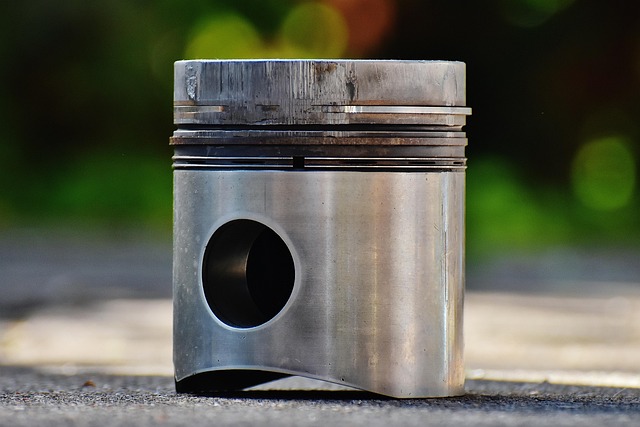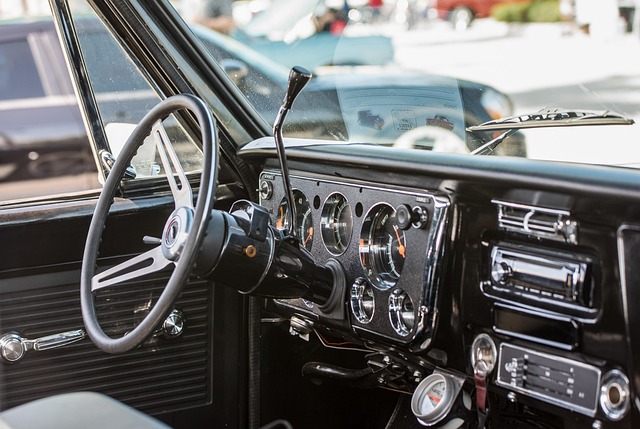Registering a car in California is a straightforward process, but understanding the requirements and gathering the right documents is crucial. This step-by-step guide will walk you through the essentials of car registration in CA, from verifying your Vehicle Identification Number (VIN) to choosing the appropriate registration type. By following these instructions, including the use of a reliable VIN verifier, you’ll ensure a smooth and efficient registration experience.
- Understand California Car Registration Requirements
- Gather Necessary Documents for Car Registration
- Verify Vehicle Identification Number (VIN) Accurately
- Choose an Appropriate Registration Type in California
- Submit Application and Complete Registration Process
Understand California Car Registration Requirements

Before registering your car in California, it’s crucial to understand the state’s specific requirements. Every vehicle owner must ensure their car meets safety and emission standards set by the California Department of Motor Vehicles (DMV). One essential step is obtaining a Vehicle Identification Number (VIN) inspection, which can be done through a certified inspector or some mobile vin verification services. This process involves verifying critical information tied to your car’s VIN, ensuring it matches the vehicle’s details on record.
California also mandates that you have an acceptable insurance policy and pay applicable fees during registration. Additionally, you may need to prove ownership by presenting a title or other legal documentation. Properly understanding these requirements, including mobile vin inspection options, will help streamline the car registration process for California residents.
Gather Necessary Documents for Car Registration

Before you start the registration process, ensure you have all the required documents. One crucial piece is the Vehicle Identification Number (VIN) verification. This can be done using a mobile VIN verifier or by scheduling a traditional VIN inspection at a designated location. The former offers convenience as it allows you to verify the VIN digitally from your smartphone, making it an attractive option for those with busy schedules. Alternatively, a physical inspection provides a more detailed assessment and might be necessary for certain vehicle types or age categories.
Along with the VIN verification, gather other essential papers such as proof of ownership (title document), valid insurance card, and a completed registration form. It’s also recommended to check with the California Department of Motor Vehicles (DMV) for any additional requirements based on your vehicle’s make, model, and year. Proper documentation is key to ensuring a smooth car registration process in California.
Verify Vehicle Identification Number (VIN) Accurately

When preparing to register your car in California, one of the critical steps is ensuring your Vehicle Identification Number (VIN) is accurate and valid. The VIN is a unique code that identifies your vehicle’s make, model, year, and other essential specifications. It serves as a digital fingerprint for your car, which is crucial during registration and future ownership transfers.
Using a reliable vin verifier, whether it’s a mobile vin inspection service or an online tool, can help ensure the accuracy of this critical data. A simple check can prevent costly mistakes and potential issues with the California Department of Motor Vehicles (DMV). Accurate VIN information is essential for proper documentation, safety standards, and ensuring your vehicle’s history is reflected correctly in its records.
Choose an Appropriate Registration Type in California

When registering a car in California, understanding your vehicle’s registration requirements is crucial. The state offers various registration types tailored to different scenarios. One essential step is to choose the appropriate option, especially considering factors like ownership type, use, and accessibility. For instance, private owners and leaseholders have distinct processes compared to businesses or those involved in specialized operations.
California provides options such as regular registration, renewable registration, and specific types for classic cars or low-emission vehicles. Additionally, the state offers mobile vin verification services, also known as mobile vin inspection or mobile vin verifier, making it convenient for owners to complete their registration process from the comfort of their homes. This feature streamlines the procedure, especially for those with busy schedules or accessibility challenges.
Submit Application and Complete Registration Process

After gathering all necessary documents and passing the vehicle inspection, it’s time to complete the registration process with the DMV. This involves submitting an Application for Title and Registration (Form DMV-123). Ensure that your Vehicle Identification Number (VIN) is accurately entered; a VIN verifier can assist in this step by cross-referencing your vehicle’s details against official databases, facilitating a smoother process.
During submission, you’ll need to present valid identification, proof of insurance, and the required fees. For added convenience, consider opting for a mobile vin inspection or verification service that enables you to complete these steps from the comfort of your home or on-the-go. This alternative approach can save time, avoid unnecessary visits to DMV offices, and ensure your car’s registration is finalized efficiently.
Registering a car in California involves understanding specific requirements, gathering essential documents, and accurately verifying the Vehicle Identification Number (VIN). By following the steps outlined in this article—from ensuring compliance with registration types to completing the application process—you’ll be well on your way to securing your vehicle’s registration. Remember to use a reliable VIN verifier to maintain accuracy throughout the process.
